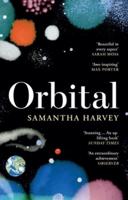Publisher's Synopsis
This historic book may have numerous typos and missing text. Purchasers can usually download a free scanned copy of the original book (without typos) from the publisher. Not indexed. Not illustrated. 1857 edition. Excerpt: ...gem-like appearance produced by the touches of colour--blue, buff, and brown--about the orifice of the mouth or stomach, and about its sharply-pointed tentacles. The stem or body is also variegated with rows of brightly tinted tubercles, and its whole surface is clouded with pale iridescent, or rather nacreous, tones of pink and azure, varied with occasional flashes of orange. All the species are furnished with tubercles of a similar description about the stem or body, but in many they are not so conspicuous, and in others almost imperceptible; yet they no doubt exist in all, as they are not merely ornamental, but essential organs, peculiar to this class of creatures; being reservoirs from which they can shoot forth a thread, furnished with a barbed and poisoned dart, by means of which they are able to attain an enemy, or victim, far beyond the reach of their tentacles. Mr. Gosse very graphically describes the death of a small fish struck by one of these thread-borne poisoned arrows, at some distance from the offended Actinia, who launched his dart, as it seemed, for no greater provocation than a slight disturbance of the water rather nearer to his retreat than was agreeable. The Actinia gemmacea, it would appear, is a more voracious creature than most of his congeners, for Dr. Johnston, in his splendid work on the British Zoophytes, describes one of this species that had managed to swallow a shell of Pecten maximus as large as a common saucer, its own natural diameter not exceeding two inches. It managed, however, to distend its elastic form sufficiently to receive the enormous prey; but the shell divided the stomach into two completely separate departments, the lower one being thus perfectly shut off from its usual supplies. To..."























